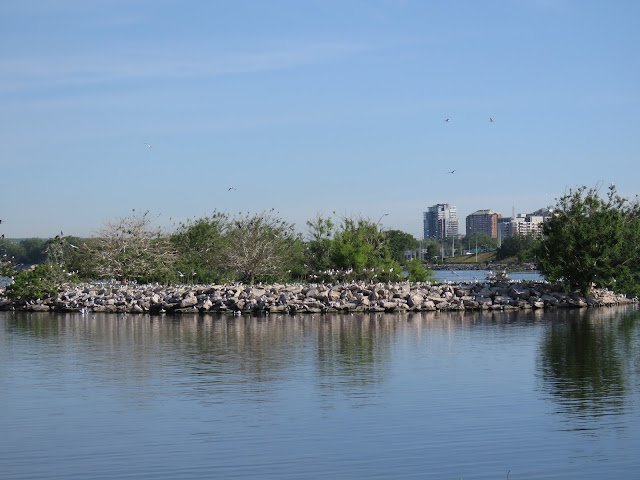These two white ducks are probably escaped domestic ducks. They are also called Long Island Ducks and American Pekin Ducks, in addition to Pekin Ducks. Pekin Duck are primarily used for egg and meat production, but also as pets. They were bred in China from Mallards. They were first brought to North America in 1873 to Long Island, NY.
These two Pekin Ducks were hanging around with a group of Mallards. In the third photo you can see the Pekin Ducks in the center and a male Mallard on the left. On the far right are two Ring-billed Gulls who happened to be passing by.


















































